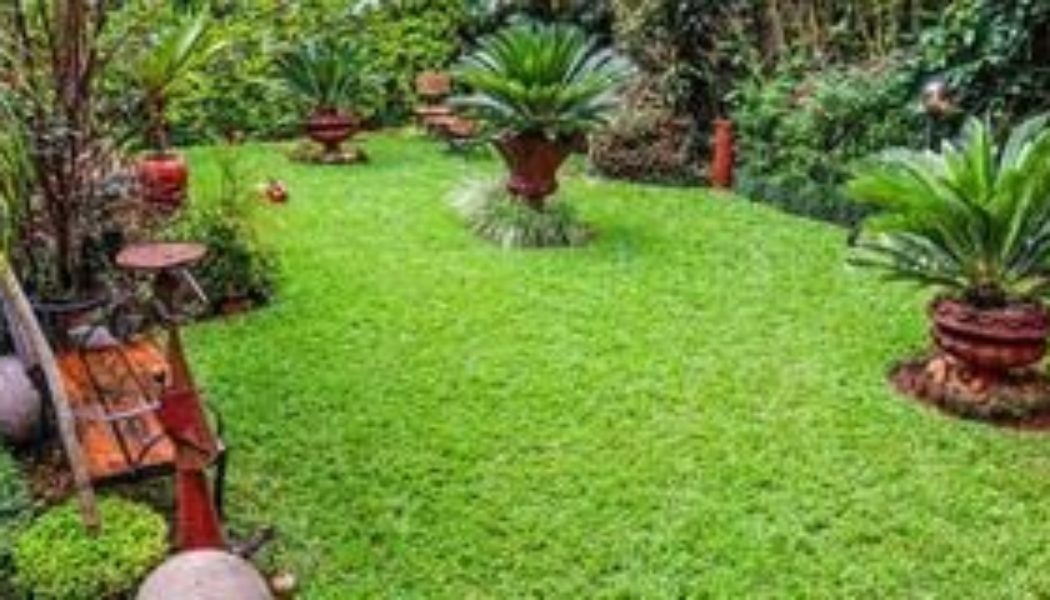When Caroline Abwoga, a former banker bought her house sitting on an eighth of an acre in Nairobi’s Lavington, the one wish she had was to transform the lawn.
Little did she know that she would create a mini-paradise and turn her love for gardening into a second career.
Growing perfect grass is not easy. So, she opted for Zimbabwe grass, which has become common in many homes in Kenya, because of its tolerance to dry weather and the beauty of its broad leaves.
“When they build a house for you, it comes with nothing, not even a single plant.
“So, it’s up to you to turn it into whatever you want it to be. This place was all dusty and rocky and so sad.
“I can’t bear to live in a place that isn’t green. A garden that doesn’t look healthy, or beautiful gives me a headache,” says Caroline.
Fifteen years later, she has transformed the space with a beautiful mix of colour and art.
Her backyard is bursting with blooms. Her flowers are happy, and so is she.
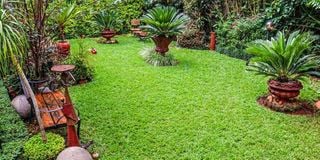
Caroline Abwoga’s backyard in Lavington, Nairobi with variety of plants and garden art on July 24, 2024.
Photo credit: Bonface Bogita | Nation Media Group
She has carefully arranged up to 300 plants of various species on the eight-acre space. The ground is neatly covered with Zimbabwe grass, giving the flowers a lush green backdrop.
“The grass is easy to maintain and thrives in areas with little sun,” she says.
But for it to look as lush, it costs money.
“In six months, I can spend more than Sh20,000 fertilising the grass. Every three weeks, I mow the grass using fuel for Sh1,000 per mowing.
“I constantly replace the soil in the potted plants and spray them with fertiliser. It’s an expensive process,” explains Caroline.
Favourite plants
In the whole garden, the Medinilla magnifica, a showy flowering plant is her favourite.
“You have to see this one. It’s my favourite,” she says, pointing to a purple flower hanging from the top of a plant. “This is Medillina Magnifica. I bought it in Tanzania for Sh10,000. It’s so unique that you won’t find it in the market. It flowers for about three months,” she says.
The Pink Princess philodendron is also among her best flowers.
“I love nature, and I have tried to bring it out as much as possible in my garden,” she says.
Caroline lives by the concept of ‘right plant, right place’ when designing a landscape to ensure that all the plants thrive.
This is evident in her garden.
“Different plants have different needs. To ensure that the garden is not only beautiful but also healthy, it is important to understand these needs and to position and care for the plants accordingly,” she says.
She has planted several outdoor plants that prefer full sun, such as hibiscus, croton, and pentas, in the sunnier spots of her garden.
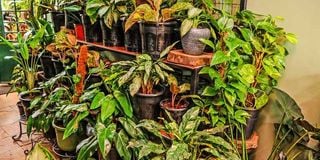
A variety of plants at Leafy green Garden Shop located in Lavington, Nairobi.
Photo credit: Bonface Bogita | Nation Media Group
She also has plants that thrive in partial shade, such as the golden shrimp plant and the Boston fern.
From banking to landscapper
A former banker, she is now a full-time landscaper, turning everything, she touches green.
But why leave the place where money is “made” to struggle to make it? I ask.
“While working as a banker, I had to move to different countries, which was difficult for my children.
“As a result, I decided to quit my job and pursue a career in design. I took several online design courses to improve my skills,” says Caroline.
Her love of potted plants is evident throughout the garden. She has strategically placed several potted plants to make an impact and add character.
This includes using large focal pots to create relaxation areas where she can relax with family and friends.
I’m curious as to why she has almost 90 percent of her plants in pots.
“If you’re not sure about your water situation, you’d rather have a small potted garden that you can control,” she replies.
She has incorporated various garden ornaments and decorations, such as garden art, wind chimes, and a stunning water feature that doubles as a bird bath.

Cactus in Groot Planters in this photo taken at Leafy green Garden Shop in Lavington, Nairobi on July 24, 2024.
Photo credit: Bonface Bogita | Nation Media Group
Her chicken design flower stand stands out.
“My husband identifies with the chicken. He always picks out the design wherever he finds one or two,” she laughs.
Most of her flowers are imported and, like many knowledgeable gardeners, Caroline has mastered the art of propagation.
“I like to travel a lot. Whenever I do, I buy a plant in Tanzania that I think is unique, and then I propagate up to 100 stems,” she says.
300 different plants
As her gardening skills grow, Caroline has moved on to creating a green garden shop that aims to bring the gardening experience closer to people, even as she increases the number of plants in her space.
What began as a hobby has now become a business.
The 15-by-7-metre space serves its purpose. She has a collection of both hardy and normal plants, giving her customers options.
She has over 300 different plants, including cacti and snake plants.
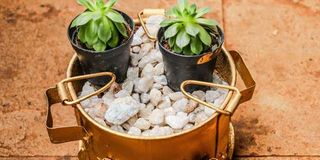
Cactus in Jiko Planter at the Leafy green Garden Shop in Lavington, Nairobi in this photo taken on July 24, 2024.
Photo credit: Bonface Bogita | Nation Media Group
Her favourite flower is the pink Aglaonema, which comes in many varieties and is a very hardy houseplant, making it her best seller. All the plants are potted to appeal to her target market, which is mainly people living in apartments.
She shows off her artistic skills with various flower stands that she designs herself.
The spider stand is her favourite, and she was motivated by the urge to be different and to give people a unique garden experience.
“I sell up to 30 plants a week. The most expensive is the money plant, which goes for Sh5,000.
“The cheapest is the cactus, which goes for Sh700 per plant. The price goes up with the planters. In general, prices depend on the basket, material, and size you buy them in,” says Caroline.
So how is the flower business doing?
“I’m not complaining. We are expecting a higher acceptance in the near future,” she replies,“We are passionate; we just don’t sell. We follow up to learn about your challenges.”
She plans to expand to Kilimani in the next two years.
Caroline admits that, despite having a beautiful garden, the journey has not been easy.
“Maintaining a garden takes a lot of time and effort. Many people mistakenly believe that once they have planted a garden, it will take care of itself.
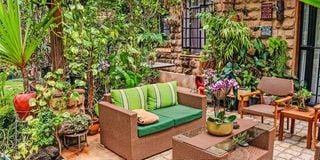
Caroline Abwoga’s backyard in Lavington, Nairobi on July 24, 2024.
Photo credit: Bonface Bogita | Nation Media Group
“However, proper maintenance is essential. This includes tasks such as fertilising the grass every six months and regularly feeding potted plants. Ongoing maintenance is necessary, but it comes at a cost,” she explains.
“Caroline has one piece of advice for anyone considering gardening.
“If you like plants and beautiful gardens, you should put in fewer plants but maintain them consistently. Otherwise, you risk losing everything,” advises the mother of three.
